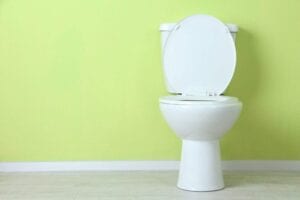The Truth About High-Efficiency Toilets
Not your father’s low-flow…

Problems with first-generation “low flow” toilets were infamous in the early 1990s. Some consumers complained that the toilets clogged too often, needed several flushes to clear the bowl, or caused problems with their home plumbing.
Although later generations of water-saving toilets have resolved such issues, misconceptions have persisted and kept many consumers from saving both water and money. With new designs and technological advancements, today’s high-efficiency toilets use less than 1.3 gallons per flush and perform as well as—or better than—conventional, less efficient models.
The U.S. Environmental Protection Agency’s (EPA’s) WaterSense program is making it easy for consumers to identify high-efficiency toilets in the marketplace. Toilets that are certified by independent, third-party testing to meet EPA’s rigorous criteria for both efficiency and performance can earn the WaterSense label. Look for WaterSense-labeled toilets and don’t let these myths keep you from saving water and saving money! Continue below to learn fact from fiction, courtesy of Denver’s leading plumbing installation team here at Blue Sky.
MYTH: Does Low-flow = Poor performance?
FACT: WaterSense labeled toilets get the job done.
-Many tend to associate lower flow with lower flushing power. Not true. New technology and design advancements, such as pressure-assisted flushers and modifications to bowl contours allow high-efficiency toilets to flush better than first-generation low-flow toilets. All WaterSense labeled toilets have met EPA’s efficiency and performance requirements, meaning double-flushing and clogging should not be an issue (but remember—any toilet will clog if used as a trash can).
MYTH: Do high-efficiency toilets cause problems with home plumbing systems?
FACT: WaterSense labeled toilets meet or exceed plumbing standards.
-Some consumers worry that lower flows may back up pipes and ruin home plumbing. There is no need to worry. WaterSense labeled high-efficiency toilets meet or exceed all national plumbing standards required of all toilets.
MYTH: Aren’t high-efficiency toilets are too expensive?
FACT: With the potential for rebates and lower water bills, WaterSense labeled toilets can save you more money than you think.
-Considering the potential savings on water bills, it could be more costly not to purchase a WaterSense labeled toilet. Also, many local utilities offer rebates ranging from $25 to more than $200 to replace older toilets with new, water-efficient models. In many cases, with cost savings and rebates, a WaterSense labeled toilet can pay for itself in only a few years.
MYTH: High-efficiency toilets are not available in the style I want.
FACT: WaterSense labeled toilets are available in a wide range of models!
-Numerous WaterSense labeled toilets are already available at retailers in many regions in a range of styles for standard to high-end bathrooms. EPA’s WaterSense label helps consumers easily identify high-performing, high-efficiency toilets, so look for the WaterSense label and start saving water while you upgrade your bathroom!
To learn more, or to schedule a plumbing inspection in the Denver Metro Area, contact us today! We’re a 4th generation Denver plumbing company that has been serving the Front Range for over 100 years!
The post The Truth About High-Efficiency Toilets appeared first on Blue Sky Plumbing.

